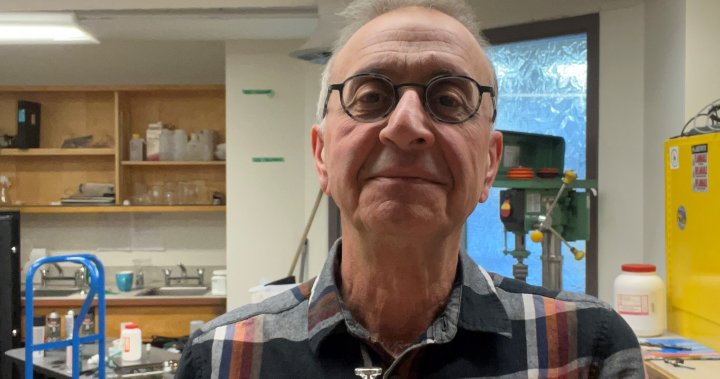What you’re about to read is out of this world. Or at least it used to be.
Dr. Edward Cloutis is a professor of geography and director of the Centre for Terrestrial and Planetary Exploration at the University of Winnipeg. He was also a part of NASA’S OSIRIS-REx, and is leading a team of researchers analyzing a piece of asteroid brought back from the mission.
“One of the main objectives was to bring a pristine, untouched sample of an asteroid back to earth,” Cloutis told Global News. It’s different than a meteorite, which gets contaminated when it breaks the earth’s surface, he said, “so, we wanted to bring back a sample that’s uncontaminated, so that we can study it in quarantine, or under controlled conditions.”
Get the latest National news.
Sent to your email, every day.
An article posted to the U of W’s website said “great care must be taken to ensure the sample — a vial of black powder weighing about 200 milligrams — is never exposed to the Earth’s atmosphere.”
Cloutis and his team hope the colour and composition of the asteroid will point to how life was brought to earth.
The U of W article said, “a central research question is whether the asteroid has organic molecules,” which could hold evolutionary implications for how life came to be on earth, it said.
Cloutis said, “we’ve been analyzing the heck out of it with some of the special lights (and) instruments we have.”
He said he got involved with OSIRIS-REx around 2013, and got to collect a piece of the asteroid because “Canada contributed one of the science instruments on the spacecraft,” he said.
Dr. Cloutis and his team are looking to publish their findings in spring, the U of W said.
© 2024 Global News, a division of Corus Entertainment Inc.




